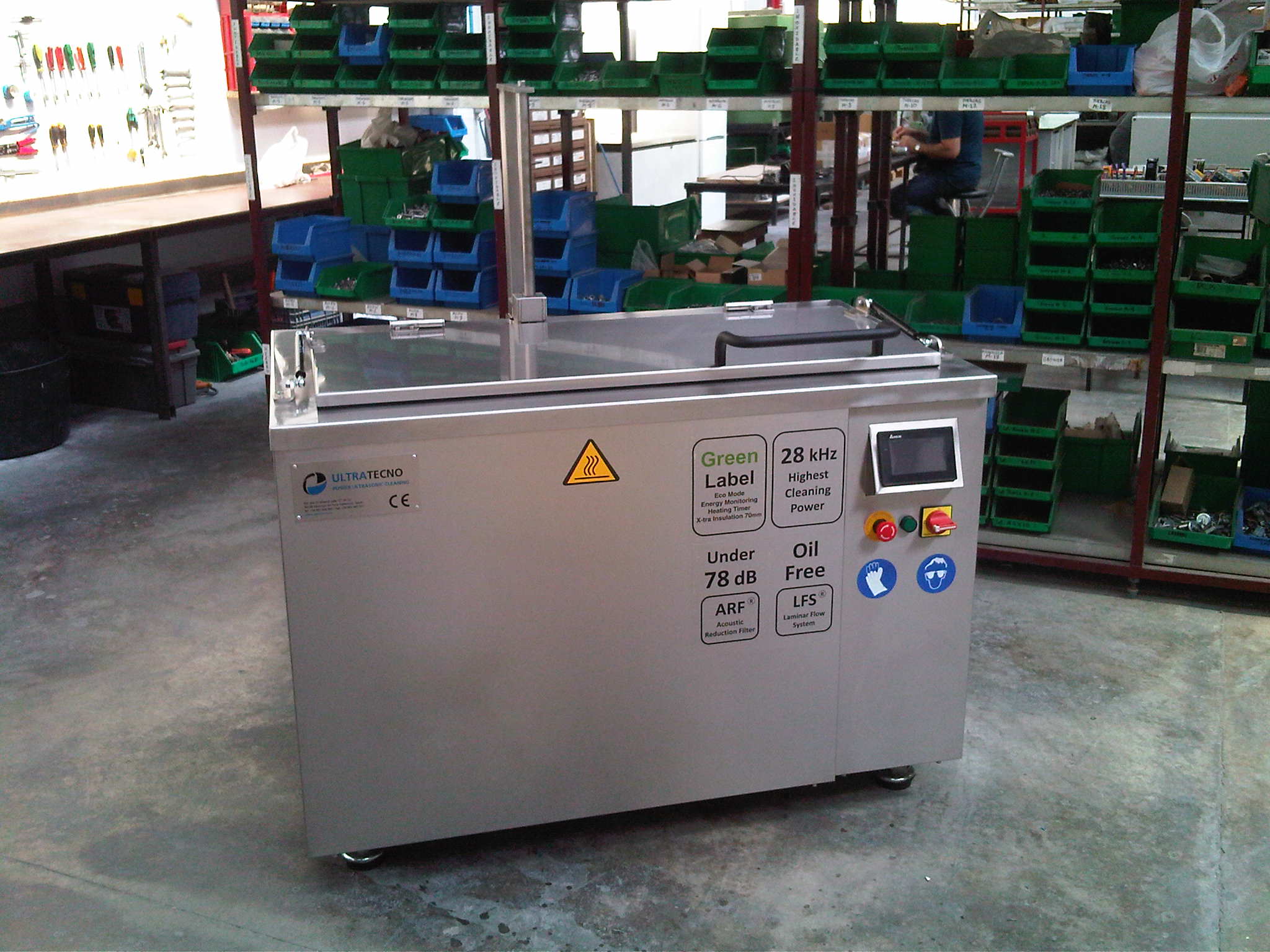
In particular, ultrasonic washing operates creating a cavitation effect which releases the dirt. The vibration of water and detergent contained inside the tank create millions of air bubbles which are compressed. Their subsequent implosion generates large amounts of energy and heat which collide against the grease, dirt and dust adhered to the surface, and eliminate them without damaging the parts in any manner.
In essence, it is as a high-intensity micro-brush consciously cleaning each minuscule hidden corner of the part in order to leave it sparkling clean. Since the bubbles have a smaller size of 1 µm, they can penetrate even the smallest hole. For this reason, the ultrasonic water cleaner is the best system for high-complexity components in any type of material: melting, steel, aluminium, copper, bronze, titanium, bronze, and some plastics, etc.
Ultrasonic cleaner bath
Each component needs a different cleaning program based on its size, its level of dirt and also its composition. Nevertheless, certain parameters (temperature, frequency, and chemical additives) are important when selecting a program:
First, the temperature is an essential factor in an ultrasonic water cleaner, since in a liquid medium temperature increases (80–90ºC) favour the formation of bubbles or, in other words, cavitation, achieving more significant results.
The vibration frequency defines the size of the bubbles generated during cavitation. Most of the adhered dirt requires low frequencies, which means a larger power of roughing. On the contrary, high frequencies are used to clean very delicate components, mainly jewellery or optic parts.
Finally, each component needs very specific chemical additives based on its composition and dirt level, as well as on the temperature to be used or the time required. This is because ultrasounds strengthen the cleaning effect of cleaning products, which on the other hand decreases its use.
If you need more information about the parameters available and how to combine them for a higher performance, please do not hesitate to contact us. Our technical representatives will provide you with advisory services in a completely personalized manner.








